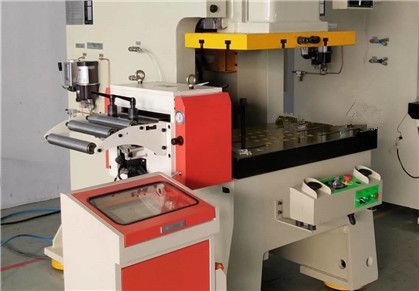Guidelines for Installing and Debugging Servo Feeders for Stamping Presses

How to Install And Debug Servo Feeder?
Step 1: Secure the Installation Plate;
Step 2: Align and Lift the Head of Servo Feeder;
Step 3: Adjust the Slide of Press Machine;
Step 4: Connect the Relaxation Signal Wire;
Step 5: Connect the feeding Signal Wire
If you're looking to improve the efficiency and accuracy of your stamping press, a servo feeder might be the ideal solution. Servo feeders are designed to work with various types of presses, including large flywheel presses, imported brand presses, and pneumatic precision presses. However, to get the best results from your servo feeder, you need to install and debug it properly. Here are the five main steps to follow:
Step 1: Secure the Installation Plate
Start by securing the servo feeder's installation plate on the lower press table's side. Make sure that the installation plate aligns perfectly with the table's T-slot's center position. Drill 4 pcs of M16 threaded holes on the table's side according to the installation plate's hole position and then fix it in place. This step is essential to ensure that the servo feeder remains securely attached to the press table.
Step 2: Align and Lift the Head of Servo Feeder
Use a crane or forklift to lift the servo feeder's head and align it with the keyway on the fixed installation plate on the table. After aligning it carefully, fix the head with bolts that match its design. Proper alignment and fixing will ensure that the servo feeder is correctly positioned on the press.
Step 3: Adjust the Slide of Press Machine
After installing the mold in the press, loosen the two bolts on the servo feeder's fixed slide. Adjust the bolts that are fixed on the installation plate to adjust the feeding height of the servo feeder according to the mold's height before tightening the bolts. This step is crucial in ensuring that the servo feeder is precisely positioned to feed the material.
Step 4: Connect the Relaxation Signal Wire
Set the relaxation of the servo feeder by connecting its relaxation signal wire to the press cam group and adjust the feeder so that it remains relaxed when the press stroke is close to 180 degrees. If it's a mechanical servo feeder, install the relaxation lever at the corresponding position on the press slide. If the stamping material is thin and there is a distance between the material support plate and the lower die, add a guide plate to prevent deviation during the feeder's operation. Proper relaxation setting ensures that the servo feeder operates correctly without any errors.
Step 5: Connect the feeding Signal Wire
Connect the feeding signal wire to the press cam and set up the servo feeder to start feeding when the press slide reaches 270 degrees. If your press doesn't have a cam group, separately install a micro switch or proximity switch for the servo feeder to operate automatically for feeding and relaxation. This final step ensures that the servo feeder works automatically and accurately.
In conclusion, following these five key guidelines for installing and debugging your servo feeder will ensure increased productivity and accuracy in your stamping press operations. Ensure that the installation plate is fixed correctly, the head is correctly aligned, the slide is adjusted, the relaxation is set, and the feeding signal line is correctly connected. By following these steps, you can rest assured that your servo feeder will operate optimally and help you achieve your production goals.


